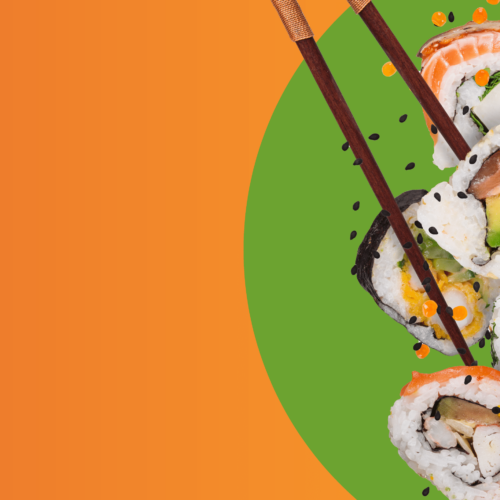Japanese food culture, known for its emphasis on seasonality and freshness, has a deep-rooted tradition called “shun” (旬). This tradition ensures optimal flavour and nutrition, shaping Japanese cuisine from everyday meals to elaborate kaiseki dining. Reflecting these values, our “Food Survey (2024)” by our sister company, Cross Marketing Inc., offers a contemporary snapshot of Japanese dining behaviours, analyzing responses from 2,500 participants aged 20 to 69.
The survey highlights three main themes: increased dining out frequency, changing post-pandemic food motivations, and emerging food trends, reflecting the shifting dynamics of Japanese dining culture.
Motivations Behind Dining Out in Japan
Japan’s population of over 125 million, especially in urban areas, boasts a vibrant dining-out culture. There are over 137,000 restaurants in Tokyo alone. Statista says over one billion dinners are served yearly in Japan’s metropolitan regions.
Japan’s high urbanisation, advanced infrastructure, and living standards create a fertile ground for food companies. This environment fosters a highly competitive, mature, and saturated industry, leading to consumer-friendly prices and generous opening hours. However, this competitiveness results in tight profit margins and challenging working conditions, with long hours and relatively low employee pay compared to other industries.
Our “Food Survey (2024)” provides key insights into the motivations behind increased dining out in Japan. This information is crucial for stakeholders to adapt to post-pandemic consumer behavior.
Enjoying Delicious Food: 32% of respondents cite delicious food as their primary motivation, reflecting Japan’s emphasis on culinary excellence and meticulously prepared dishes that are hard to replicate at home.
Socialising with Friends and Family: 22% dine out to socialise with friends and family, highlighting a resurgence in social activities post-COVID-19, especially among younger demographics.
Convenience and Refreshment: 25% of respondents dine out for convenience, finding grocery shopping and cooking cumbersome, while 22% of the population, especially busy professionals and younger individuals, use dining out to unwind.
Special Occasions and Rewards: Celebrating special occasions (18%) and rewarding oneself (17%) are also key motivations, underscoring the role of dining out in marking milestones and personal achievements.
Comparing Pre- and Post-Pandemic Motivations: Post-pandemic, the motivation to dine out has evolved, with a notable increase in socialising. This shift reflects a broader trend toward valuing shared experiences and human connection.
Implications for the Food Industry
Understanding these motivations can help restaurant owners and food brands tailor their offerings. Emphasising high-quality ingredients, creating inviting social spaces, and offering convenience-focused options can attract more diners. Promoting special occasion packages and loyalty rewards can cater to celebratory occasions.
Case Study: Ichiran Ramen
Image Credit: Tokyo Food Diary
Background
Ichiran Ramen, established in 1960 in Fukuoka, Japan, is a renowned Ramen restaurant chain specialising in tonkatsu (pork bone broth) ramen. Ichiran is famous for its unique dining concept, which focuses on providing an immersive and solitary dining experience.
Strategy/Approach
Case Study: Ichiran Ramen
Background: Established in 1960 in Fukuoka, Ichiran Ramen specialises in tonkatsu ramen and offers a unique solitary dining experience.
Strategy:
- Private Dining Booths: Enhancing focus on the taste.
- Customisable Ramen: Allowing customers to adjust the flavour to their liking.
- High-Quality Ingredients: Ensuring consistency across locations.
- Efficient Service: Streamlined ordering process through vending machines.
Outcomes:
- High customer satisfaction and loyalty.
- Originally established in 1966 in Fukuoka, Japan—Ichiran Ramen is widely recognised as the epicentre of pork bone-based ramen—and has grown significantly since its inception. After operating a single location for nearly three decades, the company introduced its innovative solo-dining concept in 1993. Ichiran has expanded internationally, with over 75 locations across Japan and additional locations in Hong Kong, Taiwan, and the United States.
- Steady revenue growth even during the pandemic.
Food Awareness and Behaviour
The survey highlights generational differences in food safety, responses to economic changes, and evolving cooking practices.
Key Trends:
- Expiration Date Vigilance: Older adults (47%) are more vigilant than younger groups (35%).
- Responses to Price Increases: Younger demographics (34%) are likelier to switch to cheaper alternatives.
- Redefinition of Cooking: Younger people consider preparing pre-cut ingredients and microwave meals as cooking.
Responses to Food Price Increases: Economic factors heavily influence purchasing behaviours. While 28% continue buying usual products despite price hikes, 34% switch to cheaper alternatives, a trend more common among younger demographics. 13% substitute with other foods or reduce consumption to maintain affordability.
Redefinition of Cooking Practices: Cooking practices are being redefined, especially among younger demographics. 78% consider frying/grilling pre-cut ingredients as cooking, and 65% view microwave meal preparation as legitimate. This trend toward convenience reflects busy lifestyles and a growing market for easy-to-prepare meals.
Emerging Food Trends in Japan
The survey also highlights emerging food trends, reflecting changing consumer preferences.
Trends:
- Awareness vs. Purchase: High awareness of locally produced foods (49%) and oats/oatmeal (48%), but lower purchase rates (25% and 13%).
- Health-Promoting Foods: Growing interest in foods with lactic acid bacteria and immunity-boosting properties.
Implications for the Food Industry
These insights help food brands and retailers. Generational differences in expiration date vigilance can guide packaging strategies for older consumers. Addressing younger demographics’ price sensitivity with value-for-money products and promoting convenient meal solutions can attract budget-conscious buyers.
Awareness and Purchase of Trending Foods: There is a high awareness of trending foods like “locally produced for local consumption” (49%) and “oats/oatmeal” (48%), but actual purchase rates are lower (25% and 13%, respectively). This gap indicates potential growth through consumer education and increased accessibility.
Interest After Content Presentation: Interest in trending foods increases after content exposure: locally produced foods (23%) and oats/oatmeal (19%). Effective marketing and educational campaigns, especially targeting younger consumers, can significantly influence purchasing decisions.
Health-Promoting Foods: Interest in health-promoting foods, such as those with lactic acid bacteria for gut health and immunity-boosting properties, is growing. Awareness is high, but purchase rates are lower. Foods enhancing sleep quality and reducing stress are gaining traction, particularly among younger consumers, indicating a shift toward health-conscious, functional foods.
Case Study: Nissin Foods’ “Cup Noodles”
Image Credit: thedieline
Background
Nissin Foods, founded in 1948 by Momofuku Ando, is credited with inventing instant noodles. The company’s “Cup Noodles,” introduced in 1971, revolutionised the convenience food market.
Strategy:
- Product Innovation: New flavours and healthier options.
- Convenience: Quick preparation with hot water.
- Marketing Campaigns: Creative and memorable ads.
- Sustainability: Eco-friendly packaging and responsible sourcing.
Outcomes:
- Strong global market presence.
- Continuous relevance through adaptation to trends.
Strategic Implications for the Japanese Food Industry
The “Food Survey (2024)” findings offer insights to guide restaurant owners and food brands in adapting to the evolving Japanese dining and food behaviours. Understanding these trends and motivations can help develop effective strategies to meet consumer demands and enhance market presence.
- Leverage Increased Social Dining: To leverage increased social dining, restaurants should create inviting environments for social interactions, including group seating, private dining rooms, and aesthetically pleasing interiors.
- Social Media Engagement: Restaurants can use social media to promote their venues for social gatherings by sharing user-generated content, hosting events, and offering group booking promotions.
- Capitalise on Trending Foods: Incorporating trending foods like locally produced items, oats/oatmeal, and health-promoting ingredients into menus can attract health-conscious consumers. Seasonal menus highlighting these ingredients align with the Japanese appreciation for seasonality.
- Educational Campaigns: Food brands can drive consumer interest through educational campaigns, partnerships with health influencers, and in-store promotions offering tasting samples and nutritional information.
- Align Marketing and Product Offerings: Understanding different age groups’ motivations allows for targeted marketing. For example, promotions for easy-to-prepare, affordable meals can target younger consumers who prioritise convenience and price sensitivity.
- Sustainability and Health Focus: Highlighting sustainability and health benefits can resonate with a broad audience. Brands can emphasise sustainability through transparent sourcing and eco-friendly packaging and promote health benefits to attract health-conscious consumers.
- Adaptation to Economic Factors: To address economic factors, brands should offer various product options at different price points. Value-for-money offerings and loyalty programs can retain customers who might switch to cheaper alternatives.
- Enhance Customer Experience: Technology can enhance customer satisfaction by enabling personalised dining experiences, such as customised meal recommendations, mobile app-based ordering, and loyalty rewards.
- Feedback Mechanisms: Effective feedback mechanisms allow continuous improvement of offerings based on customer insights. Regularly soliciting and acting on feedback can increase satisfaction and loyalty.
Recommendations for the Food Industry in Japan
- Innovation and Adaptation: Continuously adapt to changing consumer preferences and market trends by experimenting with new ingredients, cooking techniques, and dining concepts.
- Consumer Education: Invest in consumer education to bridge the gap between awareness and purchase. Informative campaigns highlighting the benefits of trending foods and sustainable practices can drive engagement and loyalty.
- Strategic Partnerships: Partner with local producers, health influencers, and sustainability advocates to enhance credibility and reach. Collaborative efforts can amplify marketing messages and create a stronger brand presence.
In a post-pandemic world, the Japanese dining scene is buzzing with excitement. Quality, innovation, and flexibility are key to staying ahead. Embrace the insights from the “Food Survey (2024)” to develop strategies that cater to the demand for social dining, health-conscious options, and convenient meal solutions.
Contact us for a comprehensive study to gain a deeper understanding and tailored strategies for your brand. Our expert team can provide detailed insights and recommendations to help you navigate the future of dining and food behaviours in Japan.
Get regular insights
Keep up to date with the latest insights from our research as well as all our company news in our free monthly newsletter.





 Senior Marketing Executive
Senior Marketing Executive Sales & Marketing
Sales & Marketing General Manager PR -Internal Communications & Government Affairs
General Manager PR -Internal Communications & Government Affairs Vital Strategies
Vital Strategies
 Customer Intelligence Director
Customer Intelligence Director